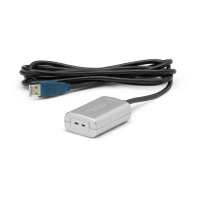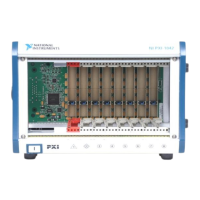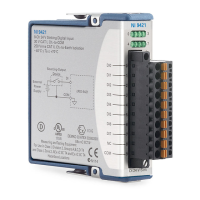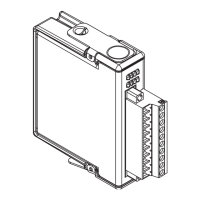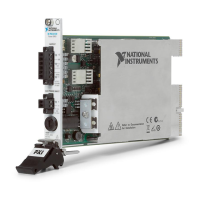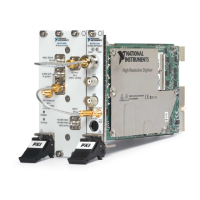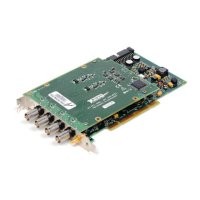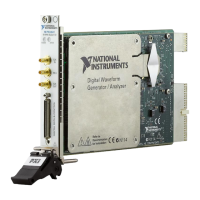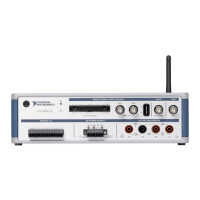Chapter 4 Analog Input
NI USB-621x User Manual 4-2 ni.com
• NI-PGIA—The NI programmable gain instrumentation amplifier
(NI-PGIA) is a measurement and instrument class amplifier that
minimizes settling times for all input ranges. The NI-PGIA can
amplify or attenuate an AI signal to ensure that you use the maximum
resolution of the ADC.
USB-621x devices use the NI-PGIA to deliver high accuracy even
when sampling multiple channels with small input ranges at fast rates.
USB-621x devices can sample channels in any order at the maximum
conversion rate, and you can individually program each channel in a
sample with a different input range.
• ADC—The analog-to-digital converter (ADC) digitizes the AI signal
by converting the analog voltage into a digital number.
• AI FIFO—USB-621x devices can perform both single and multiple
A/D conversions of a fixed or infinite number of samples. A large
first-in-first-out (FIFO) buffer holds data during AI acquisitions to
ensure that no data is lost. USB-621x devices can handle multiple A/D
conversion operations with DMA, interrupts, or programmed I/O.
• Isolation Barrier and Digital Isolators—Refer to Chapter 9,
Isolation and Digital Isolators on USB-6215/6216/6218 Devices,
for more information.
Analog Input Range
The input range affects the resolution of the USB-621x device for an
AI channel. For example, a 16-bit ADC converts analog inputs into one
of 65,536 (= 2
16
) codes—that is, one of 65,536 possible digital values.
So, for an input range of –10 V to 10 V, the voltage of each code of a 16-bit
ADC is:
USB-621x devices use a calibration method that requires some codes
(typically about 5% of the codes) to lie outside of the specified range. This
calibration method improves absolute accuracy, but it increases the nominal
resolution of input ranges by about 5% over what the formula shown above
would indicate.
Choose an input range that matches the expected input range of your signal.
A large input range can accommodate a large signal variation, but reduces
the voltage resolution. Choosing a smaller input range improves the voltage
resolution, but may result in the input signal going out of range.
10 V 10 V–()–()
2
16
------------------------------------------- 305 μV=
